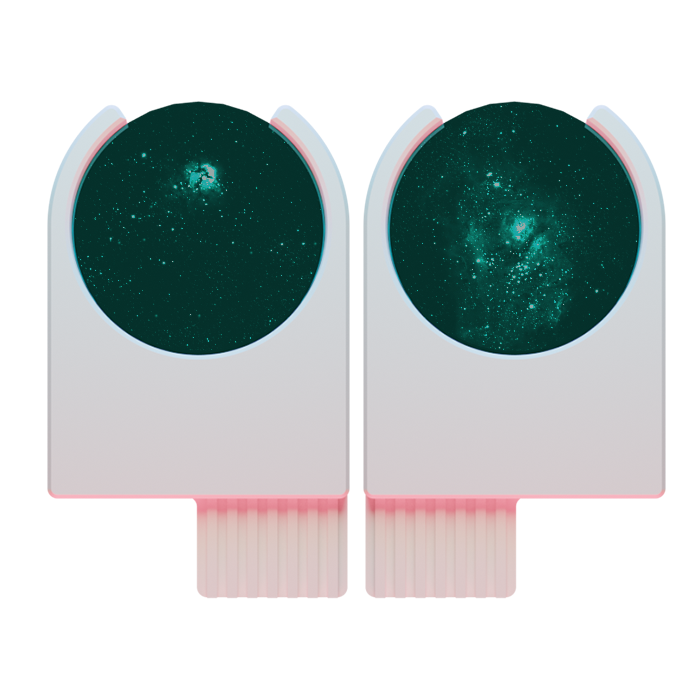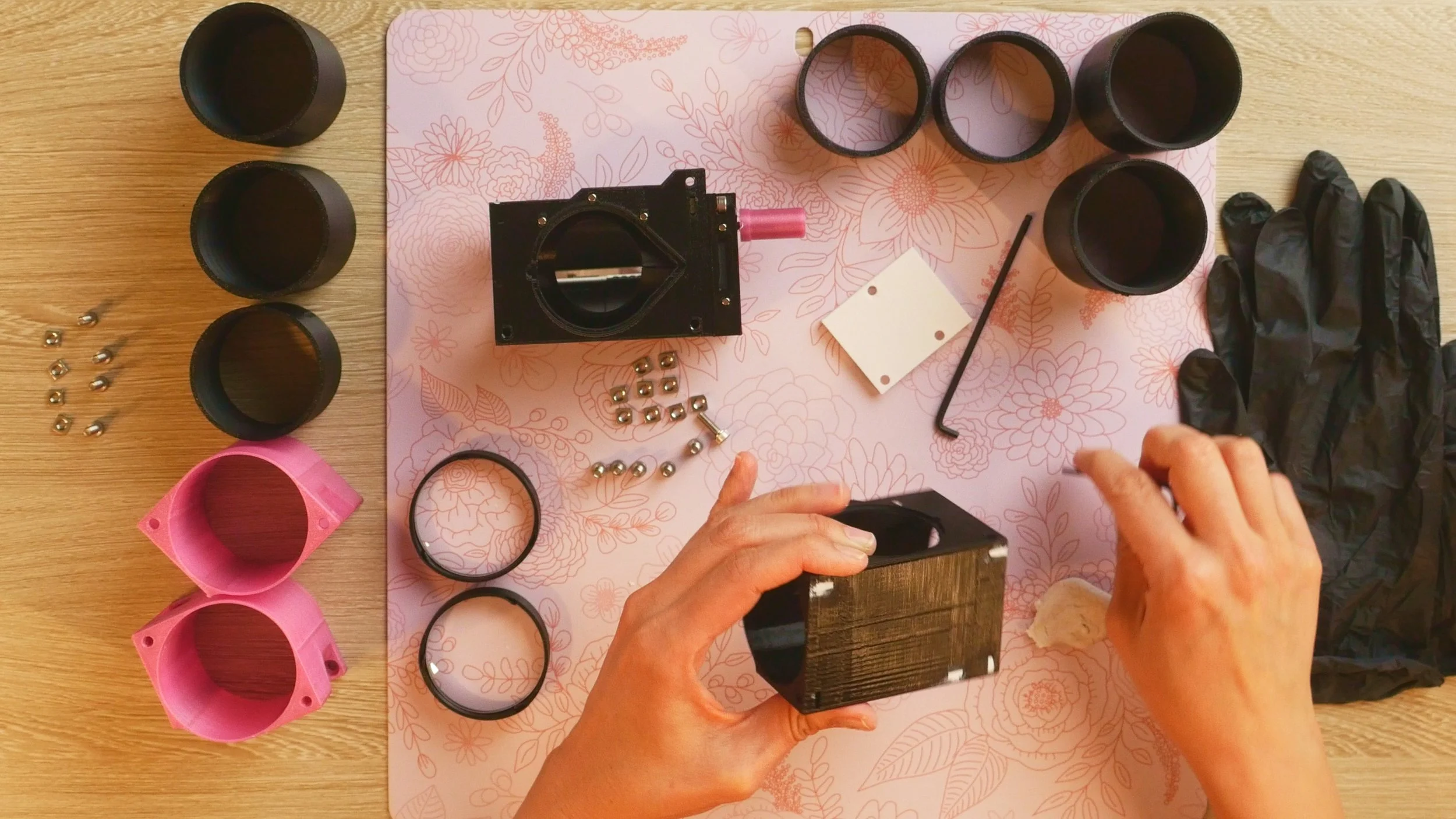
Welcome, Oregon Star Party 2024 attendees!
We can’t wait to share an unforgettable week with you under the stars! Let’s build some stargazing binoculars together, Thursday and Friday. All materials will be provided with your registration and you can use your completed binoculars Friday night!
We’ll be building Ember,
our pro 50mm binoculars for night or solar observing
With just a few simple tools, we’ll guide you through every step of building your own stargazing binoculars, an experience you can’t get anywhere else.
What makes Ember so special?
Ultra Comfortable
90 degree angle
and hands-free tripod
Ultra Bright, Wide Views
2” focusers allow 10+ degree views at 7mm+ exit pupil
Zoom in Closer
Change eyepieces for magnifications from 7x - 116x (range depends on the lenses you choose)
Easy Adjustments
Merge both images quickly and easily for different eyes and different eyepieces
2” Filter Cartridges
add UHC filters for nebulae
in seconds with magnets
Upgradeable
Upgrade optics at any time, print new components like a green laser pointer
Immerse yourself
in bright, wide views
telescopes can’t touch
Analog Sky stargazing binoculars are the only binoculars designed from the ground up to be pointed at the night sky. If you’ve never seen the sky through binoculars with 2” eyepieces, you’ve missed 1000 unforgettable sights.
And if you’re new to stargazing, there’s no better way to learn the night sky.
Summer Milky Way
from the Eagle to the Lagoon!
Large DSO’s at their very brightest!
Faint DSOs like the Heart and Soul invisible to telescopes
Have you ever wished you could see Barnard’s Loop, the Angelfish Nebula, the Heart and Soul, the California Nebula, or the Cocoon Nebula together with the full Barnard 68 dark nebula? These are just a few of the huge DSOs you can only enjoy through binoculars with maximum exit pupil and 2” nebula filters. And you’ll never see vast starfields like the Sagittarius teapot steam or Scutum the same way again.
With Ember, you can see all these and more, then zoom in for grab-and-go views of the planets, the Moon, and the whole Messier catalog.
Learn real telescope building skills over two days! Install mirrors and lenses, align the optical path, and learn how every component works!

Which lenses?
You can choose which objective lenses your binoculars will use. The standard lenses provide beautiful, wide views at the best value. The longer focal length lenses offer greater magnification and edge sharpness.
225mm f/4.5
Standard/Wide
34mm eyepiece provides 7x, 10-degree field at 7.5mm exit pupil
Zoom in up to 75x with 3mm eyepieces.
Shorter, more compact case
Lighter tripod (included)
$599 workshop + kit
300mm f/6
Balanced
46mm eyepiece provides 7x, 9-degree field at 7.67mm exit pupil
Zoom in up to 100x with 3mm eyepieces.
Sharper edges
Sturdier tripod (included)
f/6 lenses from Thor Labs
$999 workshop + kit
350mm f/7
Zoom
46mm eyepiece provides 8x, 8-degree field at 6.5mm exit pupil
Zoom in up to 116x with 3mm eyepieces.
Sharpest edges
Sturdier tripod (included)
f/7 lenses from Edmund Optical
$1099 workshop + kit
Register by June 15
Register for the class by June 15 and we’ll take care of the rest!
Ember Tech Specs
| Objective Lens | 50mm clear aperture |
| Standard Focal Length | 225mm (also configurable to 182, 250, 300, 350) |
| Image Orientation | Horizontal flip |
| IPD Range | 58-75mm (fits almost everyone) |
| Standard Dimensions | 336 x 205 x 137 mm (13.25 x 8 x 5.5 inches) |
| Long Focal Length Dimensions | 376 x 205 x 137 mm (14.75 x 8 x 5.5 inches) |
| Weight | ~2.25 kg (5 lbs) with eyepieces |
| Standard Zoom Range | 7-50x (upgradeable to 7-116x) |
| Filters | Any standard 2" or 1.25" filter |









